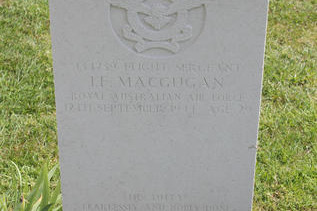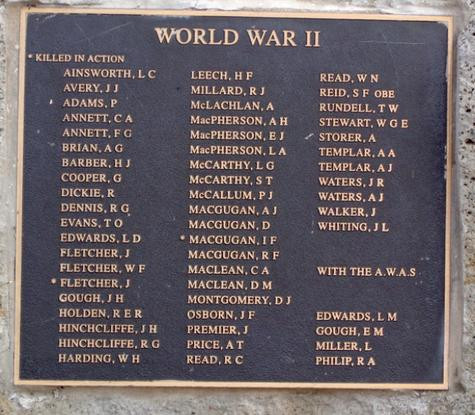General News
6 June, 2024
VETERANS' VOICES Ian Fairlie MacGugan
Ian Fairlie MacGugan was born in Hamilton on April 17 1915.

His parents were Donald Munro MacGugan and Helen Elizabeth MacGugan of Hamilton.
Ian's first enlistment was in the Australian Army on July 28 1942, at which time his locality was Hamilton.
He was a private.
His posting at discharge on January 28 1943 was 58/59 Battalion.
Ian then enlisted in the RAAF the following day, January 29 1943.
Ian's unit was No 622 Squadron, Royal Air Force (RAF), RAF Mildenhall, Suffolk, England.
Ian died while engaged in air operations in a flying battle over Germany.
He was part of the RAF's strategic bombing carried out by No 622 Squadron Lancaster aircraft.
On the night of September 12-13 1944, Lancaster LM291 took off from RAF Mildenhall at 18.20pm, detailed to bomb Frankfurt, Germany.
Nothing was heard from the aircraft after take-off and it failed to return to base.
A missing research and enquiry team later reported: “The aircraft was shot down by a night fighter and crashed in the Forest of Potaschplatz, six miles north-west of Wilgartswiesen, some 15km east-north-east of Primasens. All crew members were killed. The crash occurred at Wilgart Swiesen, Germany, on September 13 1944."
However, Ian’s death is stated by his Australian War Memorial record as having been confirmed on December 9 1944.
Ian was the navigator on this flight, which involved six other crewmen on the mission.
Ian is buried in Rheinberg War Cemetery, Kamp Lintfort, Nordhein, Westfal, Germany, in grave 18 B 16 - 20.

He is remembered on the Hamilton and Braxholme war memorials rolls of honor and on panel 126 in the Commemorative Area, Australia War Memorial, Canberra.
Ian is also commemorated on the International Bomber Command Centre Memorial, Canwick Hill, Lincoln, United Kingdom, and on the Murray Bridge 622 Squadron Honors Roll at Carwick Hill, UK.
Ian’s last rank was flight sergeant in No 622 Squadron (RAF).
No 622 Squadron
The No 622 Squadron badge showed a long-eared owl carrying a flash of lightning.
The squadron motto was "Bellamus Noctu" ("We make war by night").
No 622 Squadron RAF was a reserve aircrew squadron of the Royal Auxiliary Air Force.
During World War II, it operated as a bomber squadron of the RAF.
Post-war it served shortly as a transport squadron in the RAuxAF.
No 622 Squadron was first formed from ‘C’ Flight of No 15 Squadron, which provided the nucleus of men and equipment, at RAF Mildenhall in Suffolk on August 10 1943 as a heavy bomber unit equipped with Stirling Mk III bombers as part of 3 Group in Bomber Command.
It flew its first operation that night.
No 622 Squadron flew 195 Short Stirling IIIs on sorties in 41 missions in August-December 1943, losing seven aircraft - a loss rate of 3.6 per cent.
It re-equipped with Lancaster Mk III bombers in December 1943 after briefly operating Lancaster Mk Is that month.
After converting to the Arvo Lancasters I and III, from December 1943 until August 1945 it flew 227 missions and 2805 sorties, losing 44 aircraft - a loss rate of only 1.6 per cent.
It was used in hard battles early in 1944 and undertook attacks on German targets.
It operated in Bomber Command’s Main Force as part of No 3 Group until April 1945, when it moved to humanitarian duties dropping food to the Dutch in Operation Manna, repatriating POWs in Operation Exodus and for a brief time ferrying troops home from Italy to the UK.
The squadron was disbanded at Mildenhall on August 15 1945.
With thanks: Sally Bertram, RSL Military History Library. Contact Sally at sj.bertram@hotmail.com or call 0409 351 940.